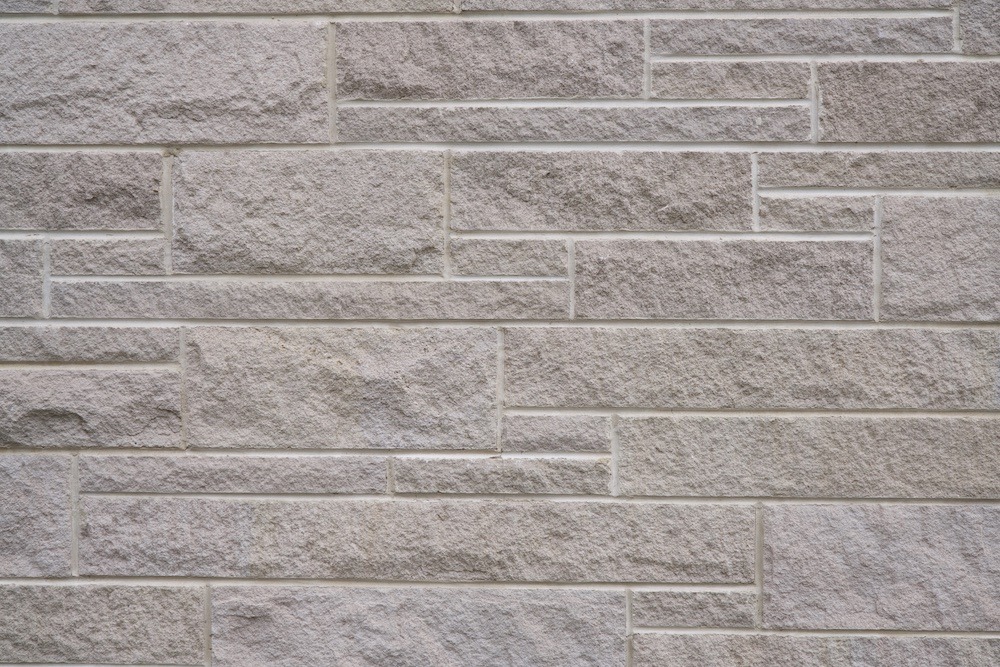The LaSalle automobile, manufactured from 1927 to 1940, was General Motors’ response to what it perceived as a gap in the market between its high-priced Cadillac and less expensive car models. As competition increased within and outside of GM, the LaSalle was dropped, in part for never having quite earned the prestige factor that Cadillac continued to exude. There are some who believe that the free breakfasts found in many hotel chains started a few decades ago in response to the market share being diverted to the bed and breakfast lodging niche. And thin brick and thin stone products could be a response as well to another industry competitor.
Manufactured stone, also called man-made stone, cultured stone or faux stone or rock, captivated the building and homeowner markets with clever promotion and marketing campaigns around 20 years ago. “We couldn’t compete with man-made stone back then,” admits Barry Gesell, President of Eden-Valders Stone in Eden, Wis. He is the fourth generation to lead the family business founded by his great-grandfather, Emil Gesell, and his two sons 68 years ago. It was launched with an old truck, a quarry and a few strong men. As the company grew throughout the region and beyond, they purchased more quarry land and acquired Valders Stone & Marble in 1992.
With keen business minds and competitive spirits, the Eden-Valders Stone team has worked hard to develop its own product line of thin stone veneer. “We have been able to bring the cost down 10 or 20 times, and it is not the case anymore that natural stone is more expensive than man-made stone,” Gesell continues. “We used to cut on a manual thin saw, but we have invested in the best thin saw equipment, found ways to quarry just for these saws and streamlined a dedicated thin stone production operation. And we can use many pieces which used to get thrown away.”
Others have followed suit, and thin brick and thin stone veneers now occupy a prominent, cost-competitive position in the building and home improvement industries for both exterior and interior applications. Additionally, with thoughtful attention given to sustainability and all things “green” or eco-friendly, brick and stone stand out from the crowd every time for their natural sourcing, insulation and fireproof features, longevity and choices in color and texture. Authentic beauty and sophisticated expression are like frosting on the cake. “Thin brick can be used anywhere you desire brick but either don’t have room for full brick or don’t have the support for the weight,” explains Britt Stokes, Director of Marketing at Acme Brick Company in Fort Worth, Texas. “There are thin brick that are for wall applications, and there are thin brick pavers that are made to use on floors. I would not recommend putting thin brick in a shower, but otherwise, thin brick are great for interior or exterior applications.”
Indiana Limestone Company (ILCO), established in 1926, has supplied stone to the Empire State Building, Pentagon, National Cathedral and many iconic buildings throughout its history. As the thin stone veneer market has expanded, ILCO produced its first edition of an installation guide.
Typically, thin veneer – also referred to as “adhered veneer” by building codes and other industry documents – products are installed by adhering directly to a properly designed and prepared support wall. A variety of different methods, products, and materials are available; some are proprietary. Thin veneer stones can be applied without a stone ledge in the foundation wall. Natural thin stone products have proven to be more durable than manufactured thin stone products.
American Brick Company, based in Warren, Mich., dubs it “a greener brick” with 40 to 100 percent recycled materials in all its thin bricks. “Thin brick is a far more environmentally friendly choice than standard brick in every aspect of production, transport, waste and installation cost. In fact, brick veneer uses 80% less embodied energy* in comparison to full width brick.” [*Embodied energy is the energy required to mine, manufacture and deliver materials.]
Brick Comparison
| Regular Brick | Thin Brick | |
| Weight per Brick | 3.8 lbs | .65 lbs |
| Sq. Ft. Coverage / Truckload | 1,637 | 9,572 |
| Pounds of Mortar required per 100 Sq. Ft. | 1,350 | 165 |
| BTUs used to make one brick | 4114 | 907 |
| Embodied energy* one brick | 14,000 | 2,400 |
[www.ambrico.com]
There is little hesitation for exterior siding with thin stone and brick products. “About 95% of our thin veneer installations go on houses, hotels, commercial structures and multi-story buildings,” Gesell relates. “Full masonry stacks stone away from the building with an air gap between the surfaces. Thin stone veneer adheres directly to a surface with a scrap coat or vapor barrier and flashing so moisture travels vertically. One of the main advantages on exterior walls and chimneys is saving on weight. We find the thin stone products perform just as well outside as inside.”
One of the most appealing aspects of HGTV’s multitude of home renovation shows is the broad presentation of styles. From sleek and modern, contemporary and cutting-edge angular designs to traditional, farmhouse, rustic, ranch and more, there are myriad ways to remodel a home to personal taste. One common thread, however, across different styles, is the use of brick and stone for beauty, comfort, accent and warmth. House hunters ooh and aah at brick walls in inner-city lofts in converted warehouses; soaring stone and brick fireplaces in open country homes; and brick or stone accent walls, backsplashes and fireplaces in subdivision houses and historic homes.
Among the many residential places which are especially suitable for thin stone and thin brick are spaces like the:
- man cave
- kitchen
- wine cellar
- family room
- home office
- basement renovation
- outdoor kitchen
- porch or patio
- bathroom
- accent wall
- vaulted ceiling
Commercial building owners need to keep up appearances as well to draw customers and retain clients and staff with attractive and sustainable interiors. Thin brick and thin stone are especially appealing in:
- restaurants
- reception areas
- antique stores
- eclectic boutiques
- art galleries
- offices and boardrooms
- waiting rooms
- and more
Reduced costs do not show up solely in the purchase price, directly attributable to the stone or brick source company, but also in transportation, handling and installation. Thin brick is much less expensive to transport and can be handled by trucking companies not totally engaged in heavy construction transport. The lighter weight also minimizes stress on forklifts, scaffolding and mast climber platforms, as well as in the stone mason. Picking up, mortaring and placing brick and rocks which weigh less than half of standard products contributes positively to the well-being of a stone mason’s hands, arms, shoulders, back and neck. The advantages of thin masonry products are abundant, and installed correctly by a professional stone mason, thin brick and thin stone can yield years of unrivaled beauty.
Function
Thin brick and stone are completely separate from a structure, attached with adhesive or ties to keep it connected or erected in precast concrete panels. It is adhered veneer rather than full brick’s anchored veneer. Thin products contribute nothing in terms of structural integrity or significant insulation properties, and they are not load bearing. “Insulation and fire resistance are best understood in terms of the entire wall system, not just the outermost surface,” Stokes says. “Thin brick will contribute to the overall performance of the wall, but its main purpose is to add the beauty of brick.”
Brick and stone veneers must support their own weights, and wind, earthquakes and even nearby trains or jets that can rattle the dishes may jar a thin wall and separate it over time. Exterior applications must include some drainage plan and an air and water barrier to keep moisture from collecting in the porous thin pieces. The bottom line is that the main function of thin brick or stone is appearance.
Aesthetics
Thin products shine in the looks department because anything thick can be made thin, and the colors and textures found in full-size bricks and rock can be produced in thin versions. Stone has been coveted from the beginning of time for its characteristic rustic elegance, and brick evokes uncompromising warmth. Eden-Valders Stone explores five key factors in determining what kind of stone to select:
- Color
- Veining
- Pitting
- Finish
- Maintenance
Thin bricks are offered in most all of the same colors, patinas and textures as full-size brick. Colors number in the dozens from white, cream and gray for a more modern feel to dozens of shades of red and brown lending a more vintage appeal. Contrasting colors and patterns can add a bold statement or a brand identification. Textures also evoke style like polished for a sleek look, lumpy and nubby leans toward funky, and weathered brick may signal an air of strength and ruggedness.
Installation
The best brick and stone products only perform exceptionally well with excellent installation, and thin brick and thin stone are no exception. It begins with a professional stone mason who understands the characteristics and installation approach to thin products. The backing to which the bricks or stone will be adhered is a major consideration, and there are several good options. Standard drywall is definitely not one of them, and thin brick installations are not well-suited to the eager do-it-yourself homeowner.
According to ILCO’s Thin Veneer Installation Guide: “Installation should be in accordance with applicable building codes, manufacturer instructions, industry best practices and project construction documents.” Stokes notes that thin brick can be installed in several different ways. “There is an important distinction between interior and exterior applications; exterior applications usually require a drainage plane behind the brick,” he adds. Methods include thick set and thin set, as well as using modular panels and prefabricated panels which become part of tilt-up and architectural precast concrete panels. Among the backing materials recommended often are some kind of cement backer board or fiber reinforced gypsum.
Many companies, including brick and stone firms, have developed excellent panels and panel systems with tabs, grooves or rails for guidance. “Our Thin Tech® system is a mechanical support and spacing panel for thin masonry veneers,” states Denise Smith, Marketing Specialist with Glen-Gery, Inc. The company was founded in 1890 and is headquartered in Wyomissing, Penn. Its Thin Tech® Classic:
offers the thinnest, most resilient masonry veneer support structure specifically designed to accommodate thin brick. It works in conjunction with traditional mortar to secure the veneer. Thin Tech® Elite panels features all the advantages of the Classic series, but with enhanced product performance. Selecting the correct mortar is an important factor to achieve the desired results of your Thin Brick project. The standard concave technique is most popular for a clean finish and can be found on almost any project. Over-mortared joints are becoming increasingly popular to achieve that old world or rustic look. [www.glen-gery.com]
Across the country just a year after Glen-Gery opened for business, Acme Brick was founded in Texas. Its brand of ThinBRIK is available with a system of lightweight metal panels where bricks are adhered with adhesive and then secured with traditional mortar. “When Glen-Gery thin brick is used for interior walls, kitchens, fireplaces and distinctive design elements like backsplashes, installers can use adhesive applications with either masonry/concrete backing or wood/steel stud framing,” Smith continues. “Thin brick can be installed using the mortar applicationmethod for both interior and exterior applications on masonry/concrete and also on wood/steel stud framing where moisture is not a concern.” Potential moisture penetration needs to be addressed with some type of air and water barrier.
The precast and tilt-up panels reduce job site labor while offering the appeal and durability of a full size brick building. The consistency of brick placement and uniform mortar is attractive in some settings, but lacks the rustic charm of hand laid brick, much like anything machine-made versus handmade. Too perfect is not always the desired image or result, but exterior commercial buildings often prefer uniformity throughout, whereas historic preservation sites may opt for the more natural-looking variations of hand laid brick.
Durability
With proper installation, thin bricks have almost the same durability characteristics as thick ones. There may be fewer flooring opportunities for thin brick, and of course, thin products are more prone to cracking than thick ones. But all in all, the thin brick products are performing well inside and out. “We do not see thin brick trending in a direction where it would replace full size brick,” Smith offers. “Thin brick gives us the opportunity to use real clay brick in applications where certain restraints would not otherwise allow the use of full-size brick.”
Stokes concurs: “While I don’t believe that thin brick will ever replace the full bed depth brick, it is certainly being used as a complement to traditional brick construction in areas where it is difficult to provide a support for the weight of brick. Many commercial brick jobs today utilize this hybrid approach, using conventional brick for the majority of the building and thin brick in areas where it makes sense. Once installed it can be difficult to tell if the product used is full bed depth or thin, especially if corner units are used. In interiors, thin brick don’t really replace full size brick. Instead they can go where full size units simply can’t. Thin brick and thin stone products are easy to work with on interiors; they go up much like tile, with very little mess or disruption to the occupants.”
Thin stone and brick products offer the inspiring warmth and beauty which have attracted architects, designers, builders and homeowners for millennia. With reduced labor, weight and transport costs, the thin options are compelling for interior, exterior, new or old construction and home renovation where uncompromising quality is the goal. All the thin products in brick and stone embrace the look, feel, style, texture and enduring qualities of Mother Nature’s unique contributions to building and accent materials.
Joanne M. Anderson is a Southwest Virginia-based freelance writer. www.jmawriter.com


